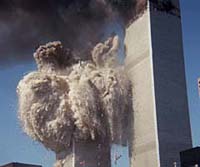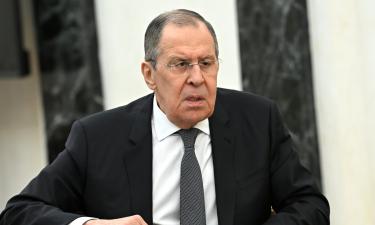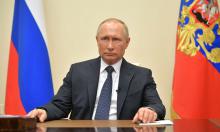Terrorism: an appetite for killing for political purposes
Terrorist attacks have become something akin to a routine these days. Every day brings the news about yet another bombing in one country or another. We are accustomed to regarding terrorism a phenomenon that originated in the East. However, the Russian terrorists were thought to be the most frightful of all at the turn of the 20th century.

“In 1977, a pressure cooker containing a homemade time bomb went off in the Moscow metro as the train was speeding along an open line between the stations Izmailovsky Park and Pervomaiskaya. The terrorist attack claimed the lives of 6 people.”
The definition of the term terrorism provided by Vladimir Dal, the author of an explanatory dictionary of current Russian published in the mid-nineteenth century, is arguably the most touching of a kind. According to him, terrorism is “intimidation by means of punishment by death, killings and all the horrors committed out of frenzy.” The last part – “all the horrors committed out of frenzy” – sounds somewhat poetic nowadays. The author of the dictionary lived in a time when the Great Russian Terror was going through its stage rehearsal phase.
The first acts of terror were committed at the dawn of civilization.
Terrorists of the ancient civilizations
The Arabs were not the first most organized terrorists on Earth. The Jews were.
In the 1st century, when Judea was under the Roman rule, some locals decided to fight the occupiers. They did not commit acts of terror against the civilians. Instead, they opted on a tactic of cruel political assassinations.
Those locals were dubbed sicarias because they normally used the sica, a short, sword-like weapon with a pointed blade and a handle. The dagger was their compact weapon of choice – it could be easily concealed under the creases of a cloak. The circumstance came in particularly handy for killers who needed to approach a victim without drawing attention. The sicarias assassinated the Romans and members of the Jewish nobility who collaborating with the Romans.
The Arabs started doing similar things in the 11th century. Members of an order of Muslim fanatics otherwise known as the “assassins” mostly killed Crusaders. They were active in Persia and Syria from about 1090 to 1272. One Rashid ad-Din as-Sinan was in charge. He was a sort of Osama bin Laden of the 12th century. Rashid ad-Din as-Sinan was known as “the Old Man of the Mountain,” set himself up as an independent Grand Master of the Assassin Order in the impregnable castle of Masyaf in Syria. The implacable and elusive assassins were said to have been taught the art of killing while being intoxicated with a hefty dose of hashish. The drug was reportedly administered in large quantities to stupefy their will.
Not unlike the modern terrorists, the Assassins were not afraid of death. Death was a gateway to heaven for them. The Mongols managed to put an end to the Assassin Order only in the 13th century by destroying castles in the mountains, the castles that provided a refuge to the “terrorists.”
In the interests of revolution
The term “terrorism” stems from the time of the French Revolution. Robespierre declared terror against the enemies of the revolution in 1793-1794. The mass executions of ideological enemies of the revolution were the main instrument of terror. “Terror is nothing less than justice, a cruel adequacy, the inevitability of retribution. It is a virtue embodied,” said Robespierre.
The new revolutionary authorities executed thousands of people during a short period of time. In the end, the effects of state-run terror backfired at its chief proponent: Robespierre was guillotined.
However, a policy of terror carried out by the state differs from terrorism.
The Mafia and local freedom fighters joined forces in Italy in the 1820s. Italy was not an independent unified state at the time. The mobsters and insurgents used terrorist tactics for launching attacks against the small monarchic regimes. They killed prison wardens, policemen, high-ranking government officials. They stormed several prisons to liberate their incarcerated comrades.
Killing for political purposes soon became a popular pastime in other countries too. For instance, there were five attempts on the life of Louis Philippe, King of France. In 1835, one of the attempts claimed the lives of 18 people.
By and large, all the “heroic” deeds committed by terrorists in Europe are overshadowed by terrorist activities authored by the Russian terrorists.
Terrorism isnot amen-only club
Terrorism was a walk of life for men only or so it looked in the past. The notion has been rendered obsolete by female suicide bombers blowing themselves up in Palestine , Israel , and Chechnya. Yet women were no strangers to terrorism in earlier times. Here is the Top Five of the most notorious female terrorists:
1. Sofya Perovskaya (1853-1881). She was the first woman in charge of a terrorist group. Born into the family of means, Perovskaya severed all the relations with her loved ones. She was personally involved inthree conspiracies for the assassination of the Russian Emperor Alexander II. The third attempt on the czar’s life was a success. Following the assassination, Perovskaya was arrested, tried, and executed.
2. Fannie Kaplan (1887-1919). She was the first woman terrorist who tried to kill the head of state. Her parents were quite well-off. Kaplan joined the anarchists when she was in her early twenties. She served a long term of imprisonment, and nearly lost her eyesight as a result. In October of 1918, Kaplan fired a few rounds at Vladimir Lenin as he was leaving a political rally at a machine-building plant in Moscow. The first Soviet leader was badly wounded during the attempt. Kaplan was caught on the spot and executed by a firing squad in a matter of days.
3. Ulriche Meinhof (1934-1976). She was born into the family of a university professor. She founded the Baader-Meinhof or the Red Army, a German terrorist organization. Meinhof was the leader of the organization for many years. The gang was responsible for numerous bank robberies, kidnappings, assassinations, and attacks on U.S. military installations located in Germany. She was finally captured in 1974, and sentenced to a long prison term. In 1976, she took her own life under murky circumstances.
4. Patty Hearst. Patty Hearst is a granddaughter of legendary newspaper magnate William Randolph Hearst. She was born in 1954. Members of the extreme leftwing terrorist group Symbionese Liberation Army kidnapped her in 1968. The kidnappers originally planned to exchange the girl for several members of the group held in policy custody. However, following a highly effective session of “brainwashing”, Patty became a full-fledged member of the Symbionese Liberation Army. She took part in the group’s terrorist activities including several bank robberies and bombings. In 1974, the FBI stormed the headquarters of the organization. Patty was arrested, convicted and sent to jail. After serving her prison term, she married a former policeman, gave birth to two children, and penned several books.
5. Shinaz Amuri (1980-2002). She was a female student at Al-Najah University in the West Bank town of Nablus. She is arguably the most well-known woman terrorist of our time. Shinaz Amuri became the first female suicide bomber. On January 29, 2002 , she blew herself up in Jerusalem, killing one and wounding about a hundred people. Saddam Hussein reportedly ordered to erect a monument in memory of the above “martyr” in Baghdad.
The Russian anarchists seem to have been inspired by the French and Italians who killed for ostensibly political purposes. The Russians decided to fight the abhorrent monarchy too. The Russian Emperor Alexander II became their main target. The czar survived 8 attempts on his life. The terrorists shot at him in 1866, 1867, and 1979. A bomb went off on the train carrying the czar and his entourage in 1879. The czar escaped the explosion unscathed. One year later the terrorists placed a bomb in his dining room. A few months later they attempted to bomb his carriage. Yet again, they failed to kill him that time.
The terrorists achieved their goal on March 1, 1881 . The first bomb went off a few yards away from the czar’s carriage, killing several passersby and Cossacks of the security detail. But the czar was unharmed by the blast. He stepped down from the carriage to give a hand to the wounded and take a look around the site. Then the second terrorist hurled a new bomb, which detonated in close proximity to Alexander II. As a result, the czar’s legs were blown off, his stomach was torn open, and his face was badly disfigured.
Amazing as it seems, the Russian society mostly took a rather benevolent stance on the terrorists. The majority of the public condemned the use of cruel terrorist methods yet they viewed the bombers as upright and admirable people who aimed to change things in Russia for the better.
In 1878, the 38-year-old Vera Zasulich was acquitted by the jury of an attempt on the life of the mayor of St. Petersburg. Zasulich shot at the mayor because she felt outraged after the latterordered toflog Bogolyubov, arevolutionary serving his prison term at the time. She missed, and the case gave rise to a huge public debate in the Russian society.
The terrorist activities abated in Russia during the rule of Alexander III. Shortly after Nicholas II came to power, an epidemic of terror swept across Russia like a tidal wave. About 4,500 government officials and 5,000 private individuals were killed and maimed by terrorists from October 1905 to December 1907. Terrorists killed an average of 18 people a day during the year 1907. The rate of killings is pretty hard to grasp for today’s man in the street. However, common people were not normally targeted by terrorists in those times though “collateral damage” was inflicted on many occasions. The number of terrorist attacks in Russia started to decrease only in 1911.
A psycho could have shot Brezhnev
Terror was not the weapon of choice for Vladimir Lenin and his henchmen, by and large. The reason behind that attitude ran in Lenin’s family, so to speak. Alexander, Lenin’s elder brother, was involved in the conspiracy for assassination of Alexander III. The police foiled the plot. Alexanderwas caught, convicted and executed. Following the execution, Vladimir Lenin reportedly spoke about “taking the other path.” At the same time, the Bolsheviks were no strangers to terrorist tactics e.g. bank robberies for the interests of revolution.
The enemies of the Bolsheviks tried to use terror in their struggle against the new authorities after the Bolshevist revolution in October of 1917. In the end, the systematic Red Terror proved to be more effective as a method for putting out individual violent acts of political terrorism. There will be no bombers left if you shoot every potential opponent.
For a long while, there was no such thing as a terrorist attack in the Soviet Union. Just a few unrelated small-scale incidents marred the overall picture of perfect happiness. For example, the Soviet Army officer, an apparent mental case, attempted to shoot Leonid Brezhnev in 1969. In 1977, the time bomb concealed in a pressure cooker went off in the Moscow metro as the train was speeding along an open line between the stations of Izmailovsky Park and Pervomaiskaya. The blast claimed the lives of 6 people. The authorities conducted an investigation and found the masterminds behind the attack. Three Armenian nationals were caught and soon executed. No other major incidents of a kind occurred in this country until the 1990s.
Life is pennyworth while a bomb costs a pretty penny
As for the rest of the world, terrorism was the background noise of the second half of the 20th century. Members of the Ku Klux Klan committed a series of terrorist attacks in the U.S. even before World War II. A brand-new wave of terror hit the world after the war as the cost of life turned out to be next to nothing for the authorities.
In the past, terrorists would target mostly government ministers and officials. Nowadays they tend to slaughter large numbers of civilians for political purposes. Members of IRA in Northern Ireland or the Basque ETA called themselves the fighters for independence and used terrorist tactics for reaching their goals. A number of extreme leftwing terrorist groups were quite active in Western Europe in the 1960s and 1970s. They declared war on capitalism in the name of Marxism.
Everybody seems to have heard a thing or two about the Arab version of terrorism. The phenomenon originated in the 1950s when the first cells of FATH (Movement for National Liberation of Palestine ) , a terrorist organization, were set up in Egypt. Destruction of Israel and formation of a Palestinian state was the main aims of the organization. Hamas, Islamic Jihad and other terrorist groups are the successors of Fatah.
The world has changed dramatically following the September 11 attacks. Many people believe the attacks set the real 21st century in motion.
A few days ago U.S. President George W. Bush stated that the war on terror would be the main challenge for the West in the 21st century. Opinions on the personality of President Bush may vary yet he seems to have said the right thing in that case. By all appearances, the most hideous and large-scale terrorist attacks are yet to come.
Medportal
Translated by Guerman Grachev
Pravda.Ru
Register on Pravda.Ru English forum for free
Subscribe to Pravda.Ru Telegram channel, Facebook, RSS!




